SALLY MANN
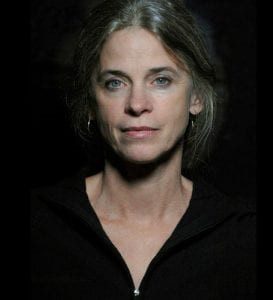
A few years back, I engaged in a classroom conversation about Sally Mann. Although I didn’t know much about her, I offered my opinion anyway. We were discussing her book, Immediate Family, which contains black and white photographs of her young children, sometimes nude. My point in class was that I didn’t think the nudity was a good idea.
To qualify this limited opinion of mine, I set about learning more about Sally Mann. Mann was born in Lexington, Virginia in 1951. She studied creative writing at college. She makes large-format black and white pictures, working since the 1990s with wet plate collodion glass negatives. Her three children, Emmett, Jessie, and Virginia, and her husband, Larry, are subjects in much of her work: “The things that are close to you,” she said, in the film What Remains (2006), “are the things you can photograph the best.” She has exhibited her work across the world and received many awards, including the Guggenheim Fellowship, and the National Endowment for the Arts Individual Artist Fellowship tree times. Nostalgia, the passage of time, death, and decay are recurring themes in her work. A striking feature in her photography is its stunning light.
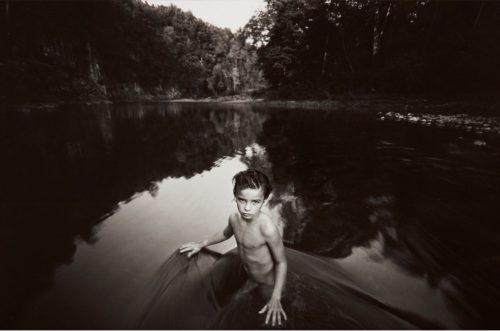
Like Sally Mann, I am a mother. My children – five boys –are now men. At times, I wish for the time when I was the center of their universe. I took many photographs of them as children. I wish I had been a better photographer. My photographs are snapshots; Mann’s are works of art. When I look at Mann’s Immediate Family, I see both her children on paper and my own: their constant energy, lack of inhibition, their intense joy and conflict: their “innocent savagery,” and “scenes of distress” (Woodward).
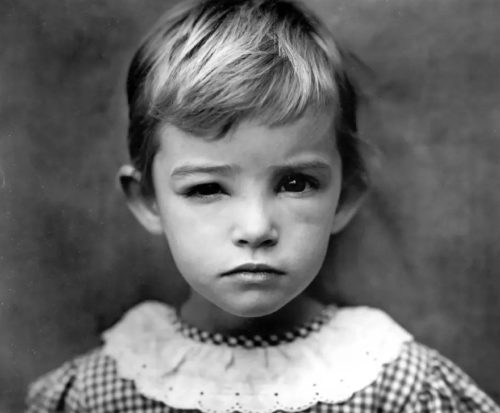
Once, my son was bit by a mosquito close to his eye and it swelled up just like in Mann’s “Damaged Child;” I photographed him, but it’s not a museum-quality print.
At times, my boys, in youthful abandon and as young children do, would gleefully streak down the hall after a bath. The freedom to run naked comes with being young, innocent, and unaware, but I did not photograph these mad-dash events.
Mann’s children didn’t (and don’t) mind the published pictures. Mann and her children (I presume she taught them this) saw the photographs as representations, not the real thing. It’s true, to a degree. Other people have a harder time disassociating what’s real and what’s representation. In 2002, Woodward wrote “The Disturbing Photography of Sally Mann” for the New York Times. Did Sally Mann, he asks, willingly put her children at risk? Had she exploited her children for an “affluent audience?” Controversy followed. Mann caught between the crosshairs of a culture war about obscenity in art. In 2015, Mann wrote a lengthy rebuttal, also published in the New York Times, defending her work, saying that she would do it again, that nudity and sexuality are different, and that “the dignity of her subjects is… imperative in [her] work, both in the taking of the pictures and their presentation.”
I’ll mention two more Mann’s books. They too, like Immediate Family, are about the “passage of time and the transience of life” (Sheets).
Deep South (2003) is a collection of photographs of landscapes in Louisiana, Mississippi, Georgia, and Virginia, that explore “memories of the past that linger in current consciousness” and address themes of racism, bloodshed, and civil war. Vicki Goldberg, in her article, “Sally Mann’s Haunted South,” calling the photographs “immensely dark pictures: an angry, oppressive, demanding display…. As dark as death itself… strong and harrowing…. Fierce vistas without redemption, the landscape of hell masquerading as art.” That’s a pretty intense critique.

What Remains (2005) contains photographs of corpses at a body farm, where the process of decomposition is studied scientifically. Strangely, I don’t mind it. I think it is reverent. It’s certainly not like what you’d see in Indiana Jones. Some of my own pictures are in the same vein. Here is one that I took in Idaho. I really like it, but it’s about death and I don’t know how many people want to look at that.
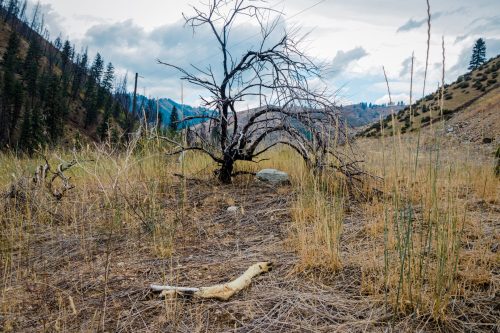
Finally, here’s a screenshot of a Sally Mann post on Instagram of a series of self-portraits (2006-2012).
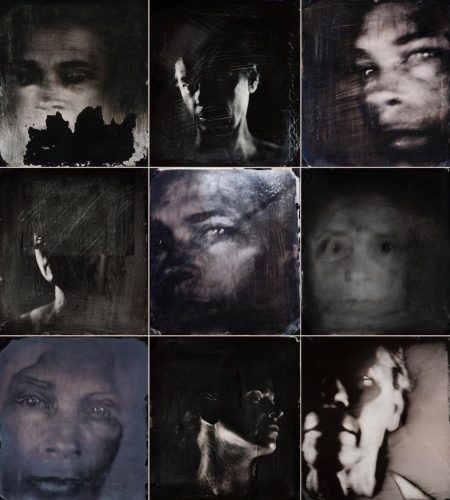
As these photos illustrate, her work is full of ambiguity. There’s more ambiguity to Sally Mann’s work than her printing process. Her photos, says Sarah Kennel, are full of “contradictory levels of meaning.”
This consideration of Sally Mann’s work could have gone in many directions. Her photographs are profound, intimate, beautiful, provocative, and creative. She and I share many interests, with only one real point of divergence. I admire her work.

